There are many types of cooking oil to choose from and when choosing cooking oil, there are several factors to consider. Cooking oil is a type of fat that is derived from various plant or animal sources and is used for cooking or frying food. It serves as a medium to transfer heat to the food and adds flavor and texture to the dishes.
Today’s grocery store cooking oil aisles can be intimidating. With so many options, it might be tough to know which oils will provide the most health advantages or meet your food preparation demands. This guide could help you in deciding what to keep in your pantry.
Factors To Consider When Choosing Cooking Oil
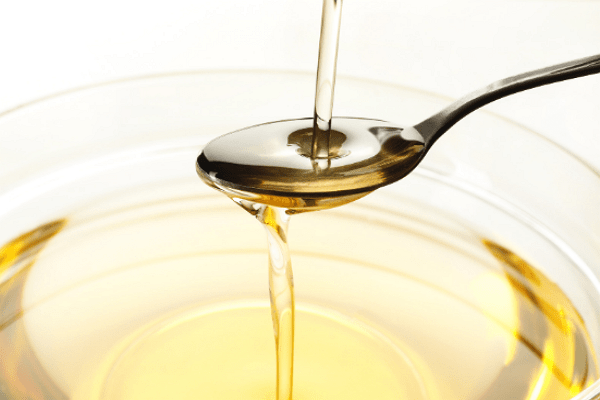
Smoke Point
The smoke point is the temperature at which the oil starts to smoke and break down, producing harmful compounds and an unpleasant taste. It is essential to select an oil with a high smoke point for high-heat cooking methods like deep-frying or stir-frying, to prevent the oil from becoming rancid or developing a burnt flavor.
Flavor
Different oils have distinct flavors that can influence the taste of your dish. Some oils, like olive oil or coconut oil, have pronounced flavors, while others, like vegetable or canola oil, have a more neutral taste. Consider the flavor profile of the oil and how it complements the ingredients in your recipe.
Nutritional Composition
Oils have different fat profiles, which can affect your health. Some oils, like olive oil and avocado oil, are high in monounsaturated fats, which are considered heart-healthy. Others, like coconut oil or palm oil, are high in saturated fats, which should be consumed in moderation. It’s important to choose oils that fit your dietary needs and goals.
Cooking Method
The cooking method you plan to use also plays a role in selecting the right oil. For example, if you’re baking or making salad dressings, you might prefer oils with milder flavors like canola or grapeseed oil. If you’re grilling or sautéing, oils with higher smoke points like peanut or sunflower oil may be more suitable.
Storage and Shelf Life
Different oils have varying levels of stability and shelf life. Some oils, like refined vegetable oils, can have a longer shelf life due to their processing methods. Others, like oils high in polyunsaturated fats, are more prone to oxidation and spoilage. Consider how you plan to store the oil and its expected shelf life.
Types of Cooking Oil
Here are several types of cooking oil, each with its own smoke point and best uses.
Extra Virgin Olive Oil
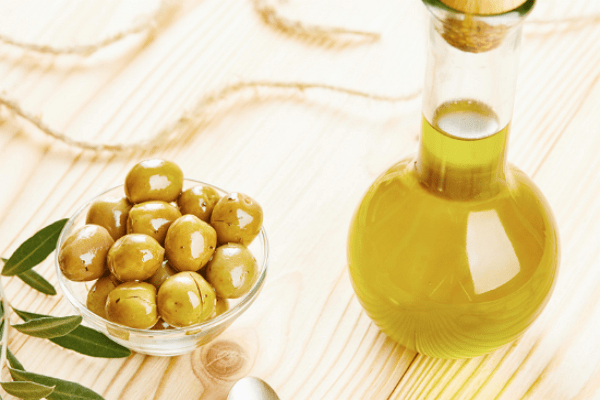
Extra-virgin olive oil is a prized culinary treasure known for its exceptional flavor and health benefits. Derived from the first cold pressing of olives, it embodies the essence of the Mediterranean. Its golden hue and rich aroma enhance the taste of salads, pasta, and various dishes. Bursting with monounsaturated fats and antioxidants, it promotes heart health and may lower the risk of chronic diseases.
Extra-virgin olive oil also contains anti-inflammatory properties and is a vital component of the renowned Mediterranean diet. Its harmonious balance of taste and wellness makes it a cherished staple in kitchens worldwide.
- Smoke Point: Around 320°F (160°C)
- Best Use: Ideal for salad dressings, dips, marinades, and low-heat cooking. It’s not recommended for high-heat frying or deep frying due to its low smoke point.
Light Olive Oil

It is typically created from a combination of extra virgin olive oil and refined olive oil and is not as high in nutrients. The smoke point varies depending on the blend and brand, however, it is usually greater than the smoke point of extra virgin olive oil.
- Smoke Point: Around 410°F (210°C)
- Best Use: Suitable for sautéing, stir-frying, roasting, and baking.
Canola Oil

Canola oil is produced from the flowering plant rapeseed and has a good quantity of monounsaturated fats as well as a good amount of polyunsaturated fats. It contains less saturated fats than other vegetable oil. It has a high smoke point, making it useful for high-heat cooking.
- Smoke Point: Around 400°F (204°C)
- Best Use: Versatile oil suitable for most cooking methods, including frying, sautéing, baking, and grilling.
Peanut Oil

Peanut oil is extracted from the seeds of peanut plants and is commonly used in Asian cooking. It’s one of the most preferred frying oils as long as you don’t have a peanut allergy. It has a little nutty flavor and scent, as expected.
- Smoke Point: Around 450°F (232°C)
- Best Use: Well-suited for high-heat cooking methods like deep frying and stir-frying.
Avocado Oil

Avocado oil has been the most popular cooking oil for several years. It’s an unprocessed cooking oil with plenty of monounsaturated fat and oleic acid, which helps lower bad cholesterol and improves general heart health, just like extra virgin olive oil. The flavor and adaptability of avocado oil set it apart from extra virgin olive oil. Avocado oil has a slight grassy flavor that is not as strong as that of olive oil. That means you may use it in almost any recipe without fear of altering the overall flavor.
- Smoke Point: Around 520°F (271°C)
- Best Use: Excellent for high-heat cooking, including searing, frying, and grilling. It also works well as a salad dressing base due to its mild flavor.
Coconut Oil
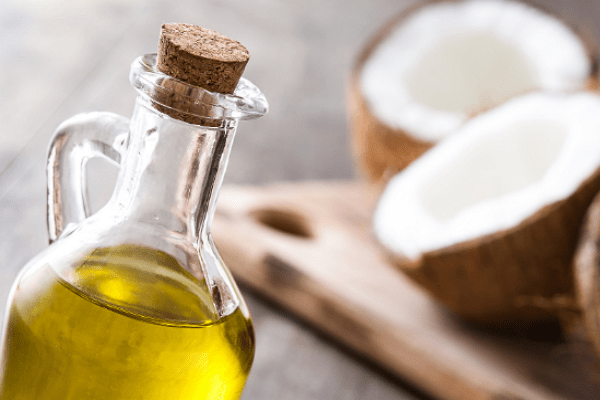
Coconut oil should be used cautiously because it contains higher saturated fats than many of the other plant oils mentioned above. While many individuals have lauded the health advantages of medium-chain triglycerides present in coconut oil, these fats make up only a small portion of the oil. Coconut oil has additional uses and can be a fantastic moisturizer for the skin and hair.
Smoke Point: Refined coconut oil has a smoke point of around 450°F (232°C), while unrefined coconut oil has a lower smoke point of around 350°F (177°C).
Best Use: Refined coconut oil is suitable for frying, sautéing, and baking at medium to high heat.
Flaxseed Oil

Flaxseed oil is abundant in omega-3 fatty acids and is an ideal addition to your diet. It has a strong nutty flavor, but some people say that too much of it tastes fishy. It quickly oxidizes and must be stored in a dark bottle in the refrigerator.
- Smoke Point: 225°F (107ºC)
- Best Use: It is great in smoothies, salad dressings, and dips rather than heated.
Ghee
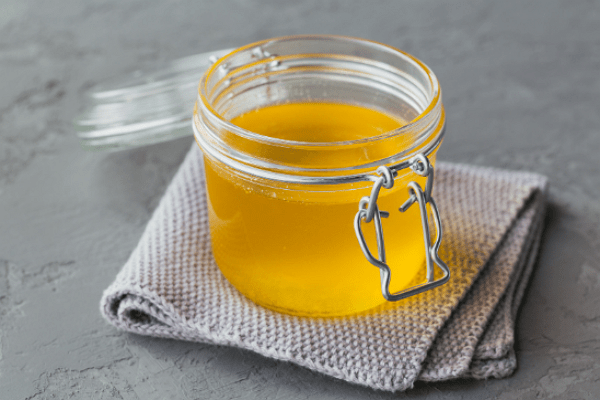
If you didn’t think it was possible to improve the flavor of butter, ghee may alter your view. It’s prepared by heating butter until the water evaporates, leaving you with a deeper flavor. Ghee has a higher smoke point and less lactose than ordinary butter.
- Smoke Point: Approximately 482°F (250°C)
- Best Use: It is best for cooking, frying, flavoring, and sauteing.
Lard

If you have the time and the fat, you may easily make lard at home. It has a negative reputation due to its high saturated fat content, yet it includes many necessary nutrients and is fine in moderation for healthy people.
- Smoke Point: Lard has a smoke point between 370°F (188°C) and 400°F (204°C)
- Best Use: It is often used for frying and deep-frying, sauteing, and pan-frying.
Corn Oil
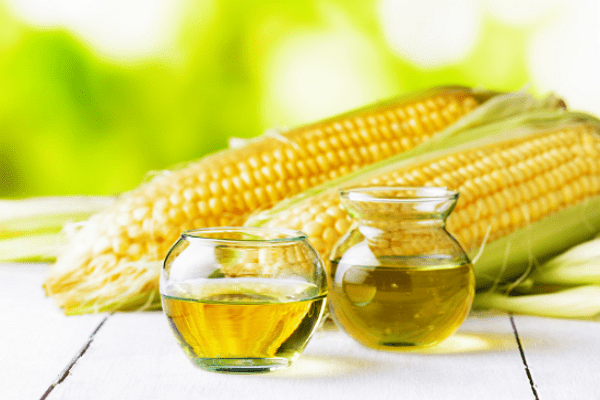
Corn oil is popular for pan-frying and baking because of its light color, high smoke point, and pleasantly sweet flavor. One of the most significant advantages of corn oil is reasonably priced. The disadvantage is that it is high in omega-6 fatty acids, which might contribute to inflammation.
- Smoke Point: 410-450°F (210-230°C)
- Best Use: It’s ideal for sauteing, pan frying, baking, roasting, grilling, and deep frying.
Healthiest Types of Cooking Oil
The healthiest cooking oils offer a good mix of nutrition and high smoke points. Extra virgin olive oil, which is high in monounsaturated fats and antioxidants, is a leading choice. Its modest processing ensures that beneficial chemicals remain. Avocado oil is another great option because it is high in heart-healthy monounsaturated fats and vitamin E. It has a high smoke point as well.
Despite its saturated fat concentration, coconut oil contains medium-chain triglycerides, which may have health benefits. Incorporating a range of oils into your diet might help you reap the most nutritional benefits.
FAQs
What is the smoke point of cooking oil?
The smoke point of an oil is the temperature at which it begins to smoke and produce visible fumes. When an oil exceeds its smoke point, it can break down, develop an unpleasant taste, and release potentially harmful compounds. Different oils have different smoke points, with some suitable for high-heat cooking and others better for low-heat preparations. It’s important to choose an oil with a smoke point appropriate for your cooking method.
Are all cooking oils equally healthy?
No, cooking oils have different nutritional profiles and health benefits. Some oils, such as olive oil, avocado oil, and certain nut oils, are rich in monounsaturated fats, which are considered heart-healthy. Others, like coconut oil, contain high amounts of saturated fats. It’s generally recommended to choose oils with a favorable balance of healthy fats and to moderate their use to maintain a balanced diet.
Can I reuse cooking oil?
Reusing cooking oil is possible, but it should be done with caution. When oil is heated and used for frying, it can degrade, break down, and absorb flavors from the food. This can affect the taste, quality, and nutritional value of the oil. If you choose to reuse oil, strain it to remove any food particles, store it in a cool and dark place, and monitor its quality. It’s generally recommended not to reuse oil more than a few times.
Can I refrigerate cooking oil to extend its shelf life?
Refrigeration is not necessary for most cooking oils and can actually cause some oils, like olive oil, to solidify and develop an unpleasant texture. Storing cooking oil in a cool, dark place, such as a pantry or cupboard, is generally sufficient. But, if you live in a very hot and humid climate, refrigeration may help prolong the freshness of oils with a shorter shelf life, like nut oils.
Conclusion
The world of cooking oil offers a diverse range of options, each with its own unique qualities and uses. From enhancing flavors to providing health benefits, choosing the right cooking oil can significantly impact our culinary experiences. Exploring and understanding these options allows us to elevate our cooking skills and savor delicious meals. We hope this post helps you with which types of cooking oil is best for you.

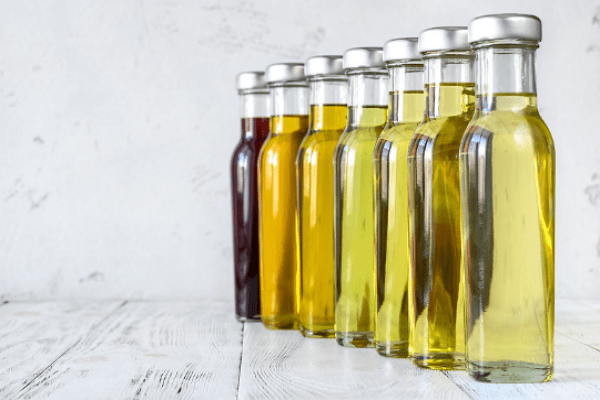

Comments are closed.